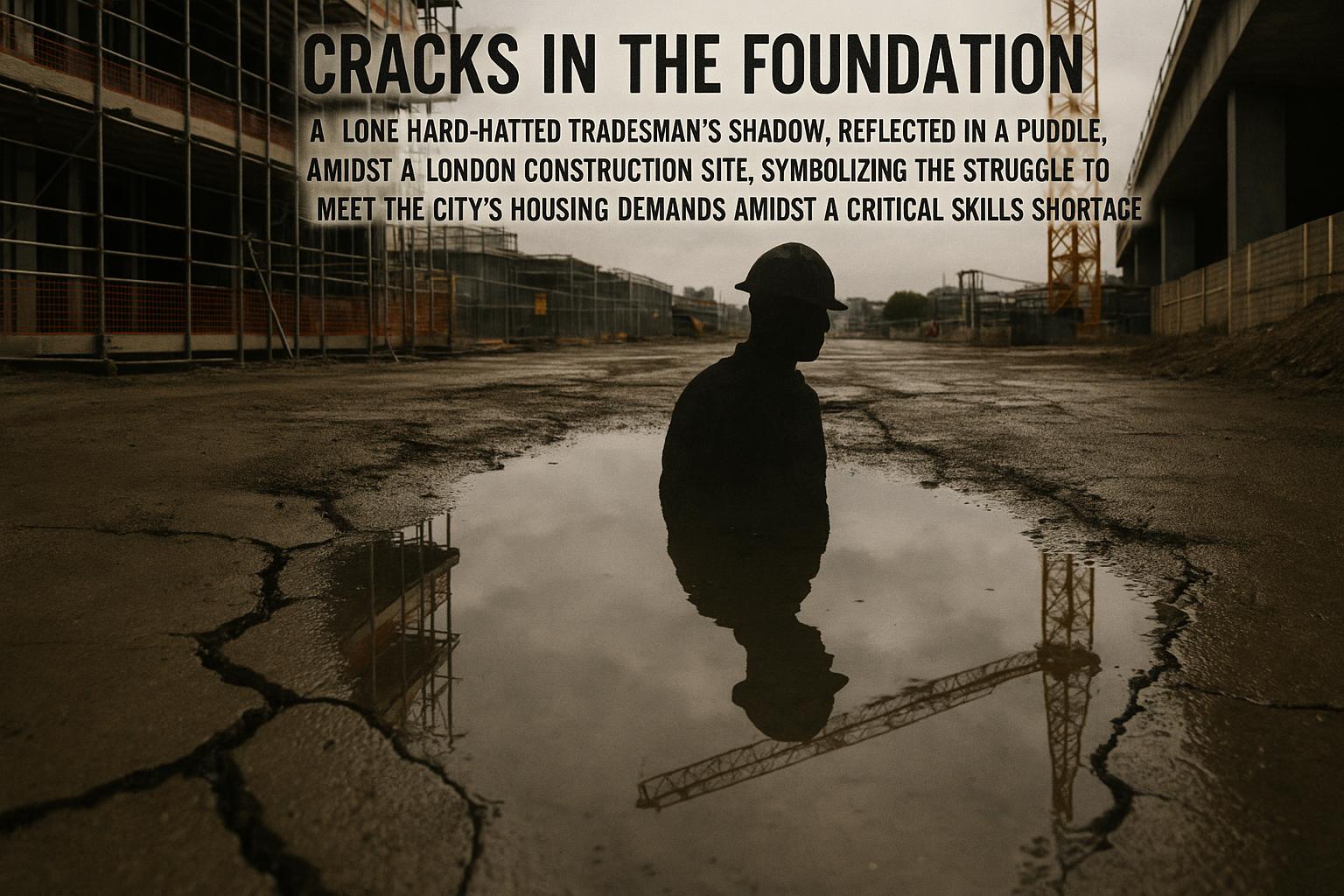London's construction industry is grappling with a significant skills shortage that threatens the city's ambitious housing targets. At the recent Labour Party Conference in Liverpool, London’s Deputy Mayor for housing, Tom Copley, highlighted the severity of the crisis, pointing to a wide-ranging deficit in trained construction workers. Copley explained that this shortage extends beyond basic labour roles to include critical training staff, such as further education (FE) college lecturers, who earn substantially less than workers on building sites. This pay disparity discourages experienced professionals from entering teaching roles, which in turn limits the supply of qualified new workers.
Fiona Fletcher Smith, Chief Executive of housing association L&Q, underscored these challenges by revealing that last year, L&Q depended on a single roofing company to service 80,000 homes in London and the South-East. She said that in these areas, only 60 percent of the necessary roofing capacity is available, and other roles, like surveyors, are also understaffed, with only 75 percent of required numbers filled. Smith indicated that government efforts to address skills shortages, while underway, are insufficient to meet current ambitions for housing construction and maintenance.
The crisis is embedded within a national construction skills shortage predicted to intensify. Data from the Construction Industry Training Board (CITB) indicates that the UK will need an additional 251,500 construction workers by 2028—an average of over 50,000 each year—to meet demand. This growth is driven by planned increases in private housing, infrastructure projects, and repair and maintenance sectors. Despite recruitment efforts bringing around 200,000 new workers annually, the industry struggles to replace retiring professionals and fills roughly 38,000 vacancies every month this year. The CITB has invested over £267 million in initiatives aimed at boosting diversity, improving training quality, and making construction careers more attractive to future generations, through programs like the New Entrant Support Team (NEST) and the Industry Impact Fund.
London’s housing targets are particularly ambitious: City Hall has committed to providing 88,000 new homes annually over the next decade to alleviate the city's deep housing crisis. Yet last year, only 11,600 homes were built, reflecting a stark shortfall that has prompted calls for planning reform and regulatory changes. Mayor Sadiq Khan described the situation as a "perfect storm" of challenges, including Brexit, the COVID-19 pandemic, rising construction costs, regulatory delays linked to the Building Safety Regulator, and specific rules affecting tall buildings.
Local government voices echo these concerns. Ealing Council leader Peter Mason highlighted another dimension of the issue: although training opportunities are crucial, a substantial portion of London’s population—about 1.2 million people—is currently outside the workforce, limiting the pool of potential recruits.
The government acknowledges these difficulties and has pledged significant investment to tackle the problem. A spokesperson noted plans to allocate £625 million to create up to 60,000 new skilled workers in trades such as bricklaying, electrical work, and joinery by 2029. Additionally, Prime Minister Sir Keir Starmer recently announced a shift in the UK's higher education approach, aiming to rebalance emphasis towards technical and trade qualifications alongside traditional university routes. The government’s target includes ensuring that at least ten percent of young people pursue higher technical education or apprenticeships by 2040, aiming to create a "gold standard" pathway into construction and related sectors.
Despite these commitments, industry leaders stress that bridging the gap between training capacity and current demand remains a complex and urgent challenge. The combination of rising housing needs, regulatory hurdles, an ageing workforce, and the unattractiveness of teaching roles in the sector requires coordinated efforts across government, education providers, and employers to secure London’s housing future.
📌 Reference Map:
- Paragraph 1 – [1]
- Paragraph 2 – [1]
- Paragraph 3 – [1], [2], [4], [5], [6], [7]
- Paragraph 4 – [1]
- Paragraph 5 – [1]
- Paragraph 6 – [1]
- Paragraph 7 – [1]
Source: Noah Wire Services
